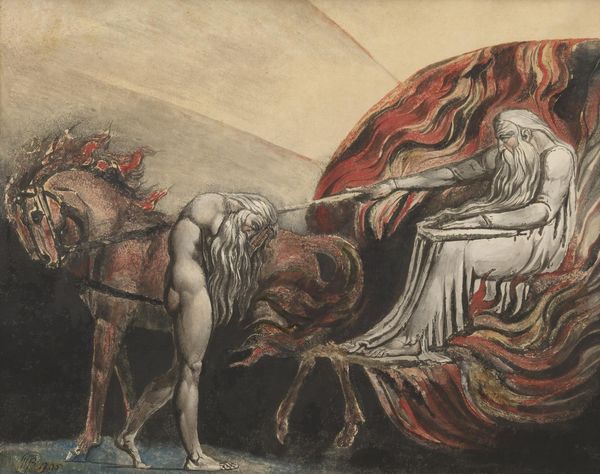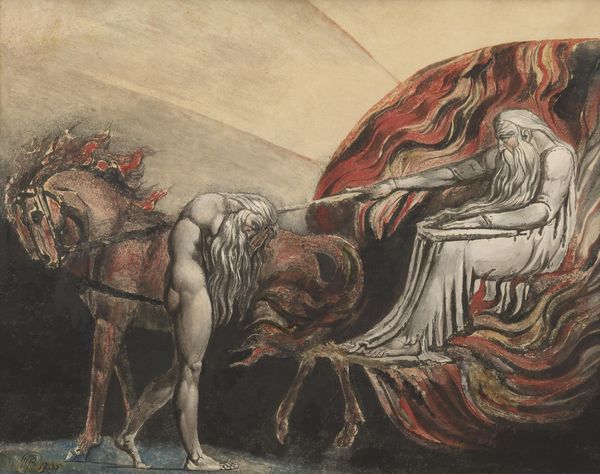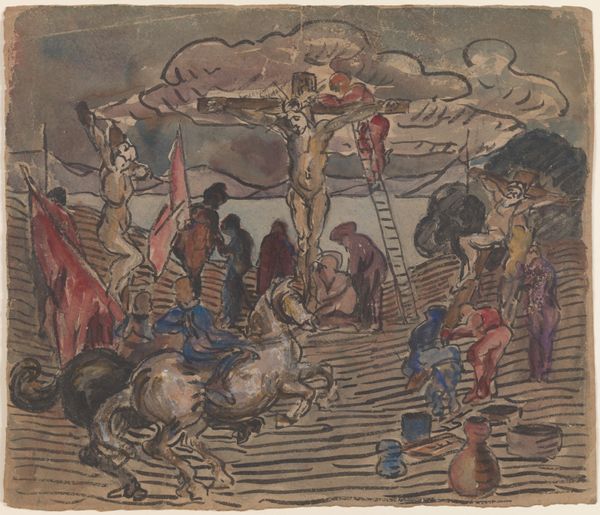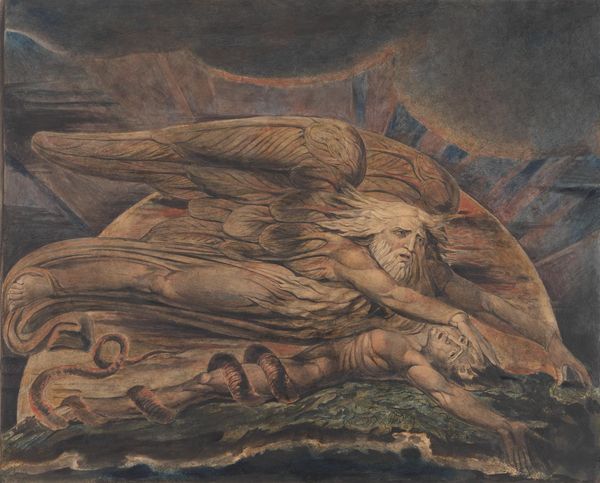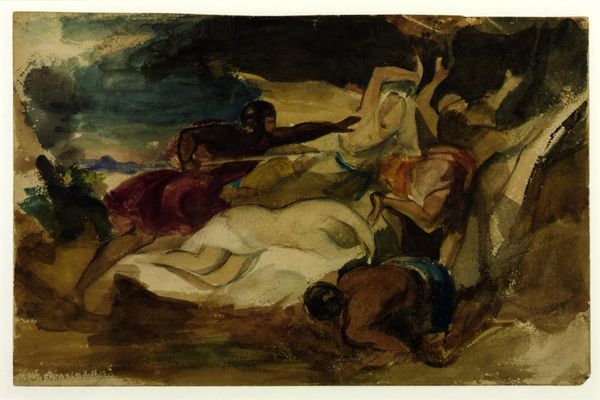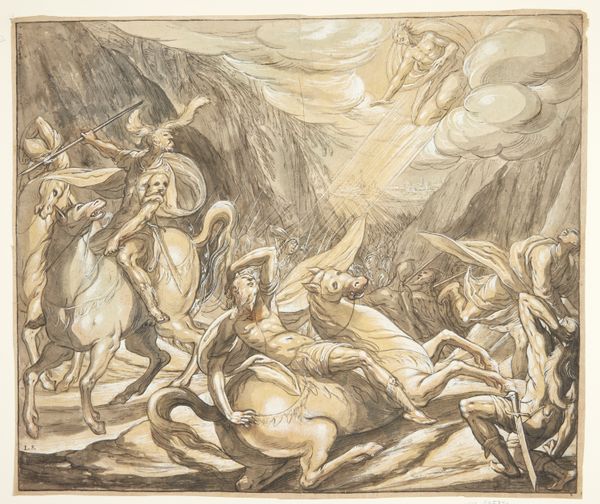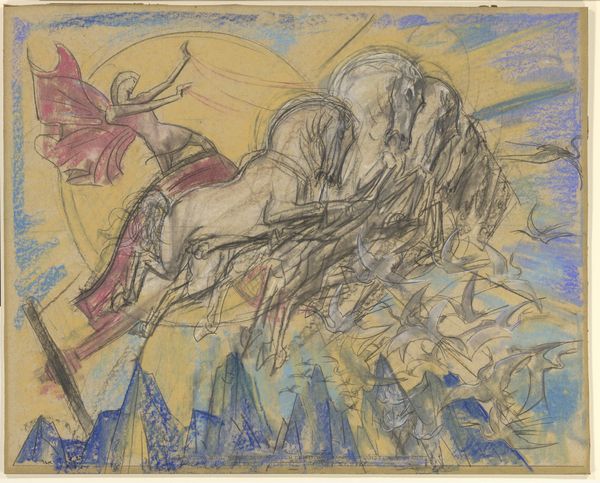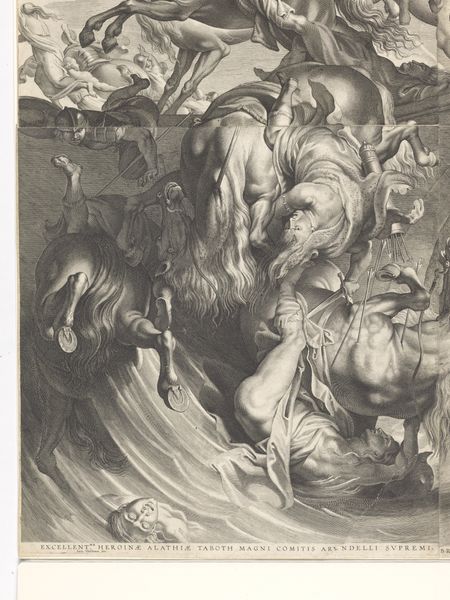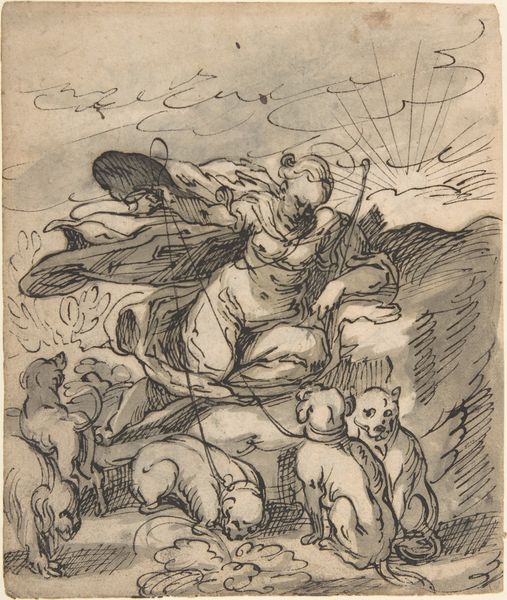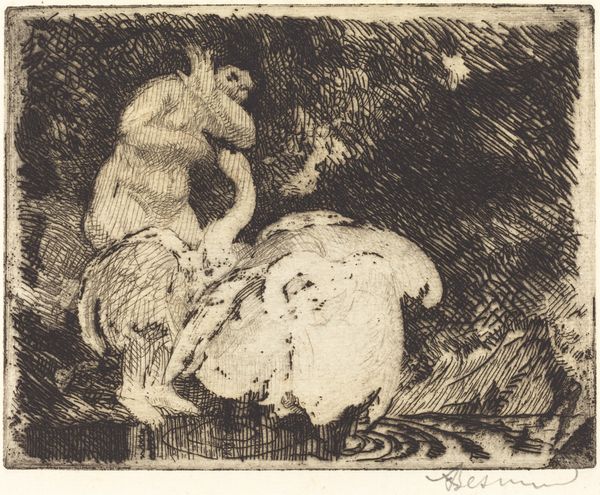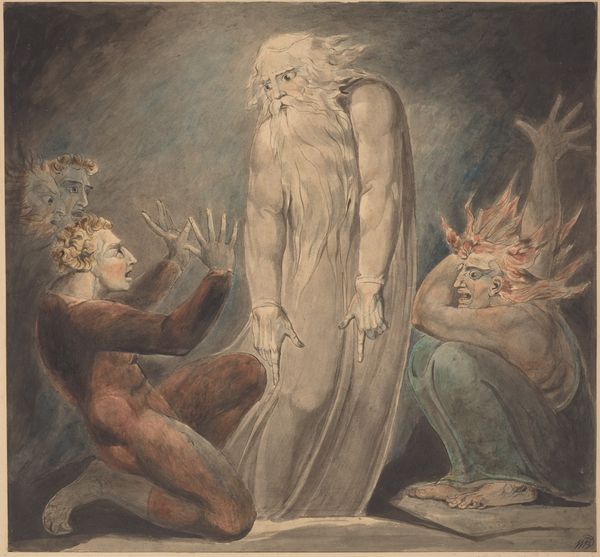
drawing, print, watercolor
#
drawing
#
allegory
# print
#
figuration
#
watercolor
#
romanticism
#
horse
#
watercolour illustration
#
history-painting
#
watercolor
Dimensions: sheet: 16 3/4 x 20 3/4in. (42.5 x 52.7cm)
Copyright: Public Domain
Curator: The somber mood strikes me immediately. A palpable sense of shame or heavy burden emanates from this work. Editor: We’re looking at William Blake’s watercolor and ink drawing, "God Judging Adam," created between 1790 and 1800. Blake was deeply invested in examining the political and social restraints of his time, often using biblical narratives to critique power structures. Curator: The musculature of Adam suggests a physical manifestation of toil, almost a literal burden being carried. He's yoked, not just to the horse but to some higher judgement. Note the sharp, angular lines contrasting against the softer, flowing lines of the horse’s mane and God’s robes. Editor: Indeed, the way Blake positions God, engulfed in flames, visually represents the oppressive nature of divine authority. This work speaks directly to Blake’s complex relationship with organized religion. His subversive representations challenged traditional interpretations of faith and often incorporated figures drawn from unorthodox mystical traditions. Curator: Semiotically, that single connecting line from God’s hand to the bridle is powerfully direct. Visually and narratively it restrains Adam and puts him at the mercy of God’s judgement. Adam's bowed head also emphasizes a relinquishing of control. Editor: Precisely. Blake questions the notion of inherent sin and suffering, suggesting that the burden Adam carries is not simply divine punishment but a consequence of societal constraints and the judgmental nature of established power. Blake was incredibly committed to revolutionary action as resistance and as praxis. This is a potent rendering of the political as personal. Curator: For me, the luminosity of the watercolors gives an almost dreamlike quality that pulls the viewer into a contemplative space where these heavy issues float. A close inspection reveals the expressive use of line that directs my eye through each scene within the whole composition. Editor: It encourages critical reflection on the sources of our suffering. Blake seems to ask: Are we inherently flawed, or are we products of restrictive societal forces? It's a reflection relevant even now, encouraging us to be active in changing conditions we feel subjected to. Curator: It seems that way, doesn’t it? The formal construction gives visual authority to an allegorical theme we can reflect upon, even today.
Comments
No comments
Be the first to comment and join the conversation on the ultimate creative platform.
